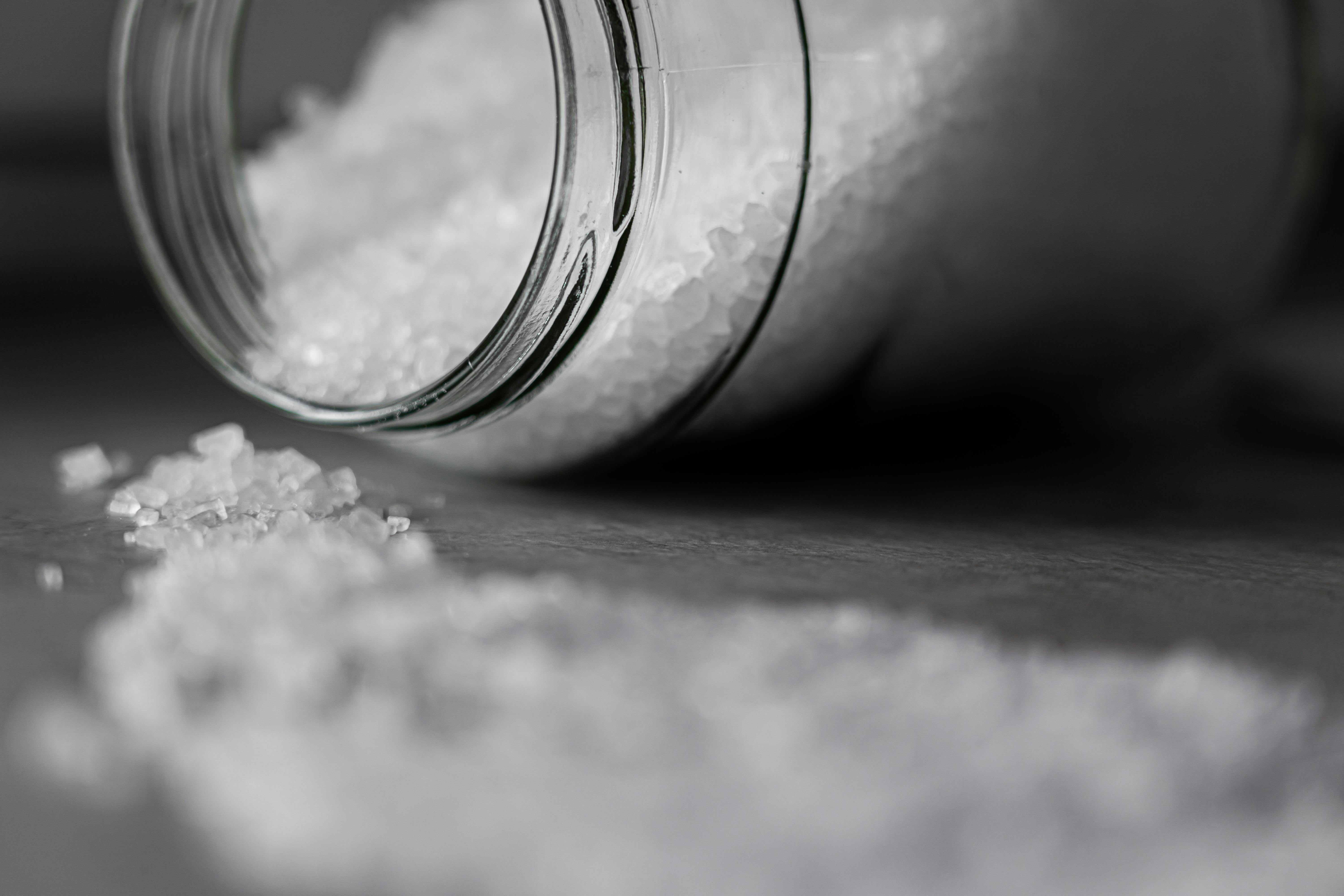How Much Salt Do You Really Need?
Savory Sodium
You have eaten petite popcorn kernels in a movie theater, chewy pretzels at a sports game, or crunchy potato chips at a get-together not only once, but multiple times. We humans love to momentarily munch on these mini-meals. To desire food is natural, since all living organisms must consume energy lest they end up decaying into the dirt. The aforementioned type of snacks are seeked out never for sweetness, but for savoriness. Most people enjoy both sweet and salty foods. That said, some palates prefer sodium over sugar.
Keep in mind that sodium, like any micronutrient, must be consumed in the appropriate amount in order for it to be healthy. An excess or deficiency of any nutrient precludes the optimal functioning of the body. For instance, too much vitamin D can lead to kidney failure; too much vitamin A, hair loss; zinc, problems with balance; and so on and so forth. This same biological principle applies to sodium. The question is, how much sodium is immoderate with respect to the human body? The FDA recommends that an adult consumes less than 2,300 milligrams (mg) of sodium per day. The average American consumes over 3,000 mg of the micronutrient per day.
Is the American Diet to Salty?
Is it any wonder that almost half of the U.S. population has high blood pressure? Actually, yes. Perhaps you believe that too much salt causes high blood pressure and heart disease . This is false, said Dr. James DiNicolantonio in The Salt Fix (2017). The pharmacist justified his claim using the overall trends of hypertension and salt intake. In the first half of the 20th century, only 10% of people had hypertension; now, over 30%. Yet, people consumed as much salt back then as they do today. He also mentioned other nations in which people have a high-salt diet but a low prevalence of heart disease – Korea, Japan, and France. The people in these societies consume just about as much salt as Americans do.
Dr. James also brought up an experiment involving the rice diet in which 83% of the participants saw no reduction in essential hypertension. The rice diet is a low-sodium diet consisting primarily of white rice, fruit, and fruit juices.
A Real Contributor to Hypertension
If a high-sodium diet does not cause hypertension, then what does? Sugar. Yes, the same substance that, if eaten in excess, leads to type 2 diabetes. Who first proposed this claim? Ottavio Giampietro. He observed that the bodily sodium in diabetics increased when said patients were given insulin. Insulin stimulates the reabsorption of sodium by the kidneys. Giampietro concluded that a diabetic patient is constantly in a state of sodium retention in the heart and red blood cells. The sodium-potassium pumps of such individuals are also less active than in non-diabetics. Insulin activates the pumps, but the pumps’ sensitivity to insulin decreases as the overall body becomes more insulin resistant.
Nowadays, people feed on refined sugar more than ever before. In the late 1700s, the average person consumed just under 5 grams of added sugar per day; in 2002, approximately 150 grams. Therefore, we eat over 30 times more sugar than the Americans of George Washington’s time.
Our Salty Past
Again, as stated above, we eat just as much salt as the folk of the early 1900s. However, modern day Americans, along with modern day Europeans, eat only about half as much salt than people consumed several hundred years ago. For a sizable chunk of human history, humans preserved their foods using salt, which would be absorbed into the food. The first electric refrigerator wasn’t even invented until 1913 by a guy named Fred W. Wolf.
Humans are descended from primates that feasted on aquatic plants millions of years ago. Such plants had 500 times more sodium than terrestrial plants. We are designed to eat salt. There is nothing wrong with craving salt every once in a while. Our kidneys filter over 2,000 mg of salt every five minutes. This was likely also true for early humans (Homo). The aquatic food eaten by said humans contained a chemical called docosahexaenoic acid (DHA), which enabled the humans’ brains to expand in size.
We are still here on Earth not because we are the biggest or fastest animal; rather, we’ve conquered the Earth due to our intelligence. We were able to use our heads to figure out how to not be at the complete mercy of nature. Humans had to continually alter their diets to adjust to the ever-changing climates.
Science is not Dogma
Now, we have a conscious understanding of the fact that our bodies need nutrients to survive. We’ve developed a methodological manner of constructing knowledge via our observations of the natural world. We call this “science.” Science is an art. It is an ongoing process in which knowledge is tested and refined. Some theories are proven to be accurate; others, wrong.
Two aspects of science ought to be remembered: 1) correlation can, but not necessarily, indicate causation; 2) cause-and-effect relationships can be rather complex. Conventional wisdom tells us that excess salt causes hypertension and heart disease. Dr. J believes otherwise.
Perhaps he is right. Maybe sugar is the primary culprit for hypertension, maybe not. Nevertheless, for those of you readers who happen to have hypertension, it will not hurt to cut back on your sugar intake to see if that is the cause of your issue. Like counting calories, recording your sugar intake requires discipline, along with researching and testing foods that are healthy.
It is your responsibility to become a healthier version of yourself, if you want. If not, then don’t bother. No one else can do this for you. Your body is a temple. Treat it well and it will be at ease; otherwise, it will be dis-eased.

